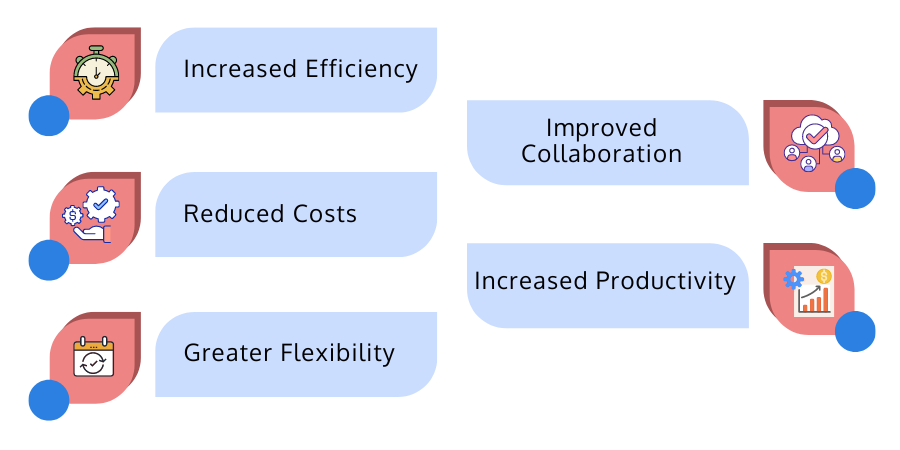
The business world is rapidly digitizing, and organizations need to find ways to streamline their processes and go digital. Low-code platforms allow businesses to create custom applications without using a lot of code. This can save time and money and make it easier for them to keep up with the latest digital trends. In this blog post, we will explore low-code platforms and some of the best options in the market.
What is Low Code?
Low code is a development platform that allows for the rapid creation of applications without the need for extensive coding knowledge. It is visual and drag-and-drop, making it easy for anyone, regardless of their coding experience. Low-code platforms are also highly scalable, so they can easily accommodate future growth.
A Brief History of Low Code Platforms
In the early days of computing, coding was the only way to create software. This process was slow and required expert knowledge. Then, in the 1980s, graphical user interfaces (GUIs) emerged. This allowed non-experts to use computers by point and click instead of having to write code. In the 1990s, application development tools emerged that allowed businesses to create their software without needing to hire developers. These were called 4GLs (fourth-generation languages). In the 2000s, a new generation of low-code platforms emerged. These platforms allow anyone to create software without any coding knowledge.

Benefits of Low Code Platforms
There are numerous benefits of low-code platforms. Let's have a look.
Increased Efficiency
Low-code platforms are designed to be user-friendly and require little to no coding knowledge, which means that businesses can develop applications much faster than traditional methods.
Reduced Costs
Because low-code platforms are typically more efficient, they can help businesses save money on development costs.
Greater Flexibility
Low-code platforms offer a wide range of features and functionality, allowing businesses to create custom applications that meet their specific needs.
Improved Collaboration
Low-code platforms often include built-in collaboration tools, which makes it easier for teams to work together on projects.
Increased Productivity
Low-code platforms can help businesses boost their productivity by allowing them to quickly develop and deploy applications without the need for extensive coding knowledge.Some Examples of Low Code Platforms
Several low-code platforms are available, each with its own features and capabilities. Here are some examples of low-code platforms that can be used to develop applications.
Appian
Appian is a cloud-based, low-code platform that enables businesses to develop and deploy custom applications quickly and easily. Appian provides a visual drag-and-drop interface for creating applications and pre-built templates and components that can be used to accelerate development.
Mendix
Mendix is a low-code platform that helps businesses create custom applications quickly and easily. It also has a library of pre-built widgets and components for application development.
QuickBase
QuickBase is a low-code platform that enables businesses to develop custom applications without writing code. QuickBase features an easy-to-use point-and-click interface for creating applications and pre-built templates, forms, and reports.
Challenges of Using Low Code
- One of the challenges of using low code is that it can take time to find the right balance between automation and manual intervention. More automation can lead to a loss of control, while more can result in inefficiencies and errors.
- Low-code platforms tend to require a higher upfront investment in terms of time and resources in order to get the most out of them. This can make it less attractive to organizations looking for quick and easy solutions.
- Low-code platforms are only sometimes suited for all types of applications or projects. They may be better suited for smaller, more straightforward projects rather than large or complex ones.
Why Should One Go for Open Source Low-Code Platforms?
There has been a growing movement towards open-source software in the past decade. This is because open-source software allows for more collaboration and transparency than proprietary software. There are many benefits of using open-source low-code platforms, which are as follows.
- They are usually cheaper than closed-source alternatives.
- They offer a greater degree of flexibility and customization.
- They promote collaboration within organizations.
- They are often easier to use and require less training than traditional development environments.
If your organization is considering going digital, consider using an open-source low-code platform that will enable you to save money and customize your applications to meet your specific needs.
Conclusion
In today's business world, it is more important than ever. However, not all businesses have the resources or capabilities to invest in traditional software development. Low-code platforms offer a way for businesses of all sizes to go digital and automate their processes with little investment.
Low code could be the answer if you're looking for a way to improve your business operations. Batoi OpenStudio, the low-code platform for open-source apps, enables faster app development using the OSF and easy deployment management. Existing business apps can also be customized using Batoi CloudSpace, a cloud workspace for managing and automating business activities.

 Batoi Corporate Office
Batoi Corporate Office